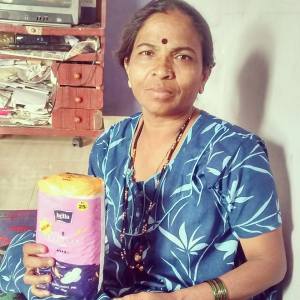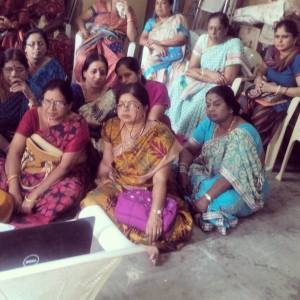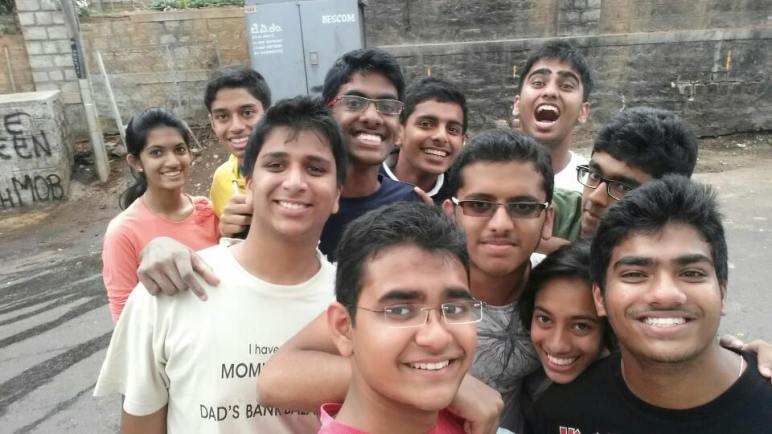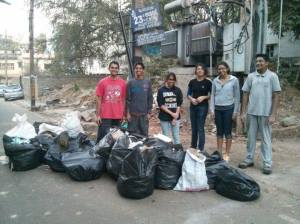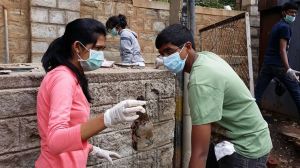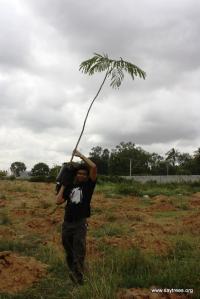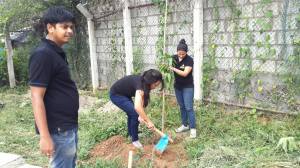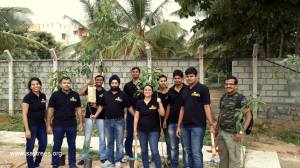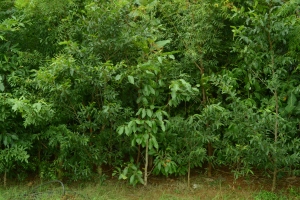A survey conducted by 25-year-old Dilip Kumar Pattubala, out of curiosity, exposed him to the abysmal levels of menstrual hygiene existing among women in the low income group. This Bangalorean, a serial social entrepreneur was caught tongue-tied when an Australian colleague made an innocuous enquiry about menstrual hygiene among the urban poor. Unable to give a satisfactory answer pushed Dilip into research, and what he found moved him enough to start Sukhibhava, a social enterprise that aims to provide women from lower income groups with better, cleaner menstrual hygiene products and educate them against using traditional methods.
In 2010, Government of India, under National Health Mission approved RS 150 crore scheme to increase access of sanitary napkins among women and girls. In spite of these schemes, menstruation, a simple bodily function, is shrouded in years of meaningless cultural norms and secrecy, leading to adverse repercussions on women all over the country, but profoundly so among the urban poor. Dilip’s survey of 250 women in urban slums restates the lack of awareness. “After doing research, I conducted a survey to find out the level of sanitary napkins’ penetration. Only 12 per cent of women all over the country use sanitary pads!” he says.He also interviewed 250 women from three government schools, three urban slums and two garment factories in Bangalore.“A staggering 82 per cent women said they don’t use pads, out of that 76 per cent said they use old clothes while six per cent said they use materials like plastic, paper, sand, among others,” he points out.
Aftermaths of traditional methods:
The continuous usage of traditional methods and shunning of sanitary napkins can have both physically and socially damaging results, as exemplified by Dilip’s survey.
Two major aftereffects include absenteeism, and infections. “In my survey, 36 per cent women said that they would abstain from going to work while menstruating. Especially in garment industries, absence during menstruation has become a ritual,” he says. He added that absenteeism extended to young girls who would either drop out of school on reaching puberty, or resort to taking five days off every month.
In an environment where the average household income is extremely low, loss of pay due to cutting work, compresses the already meagre family budget. Similarly, girls quitting schools due to lack of hygienic menstrual products, forces them to either join the informal employment sector, or be married off promptly, which lead to another set of problems. “More importantly, 54 per cent of women in these slums mentioned using cloths, and other objects like sand, plastic, newspapers which left them with rashes, and infection,” he adds. The lack of adequate medical help in these societies further compounds the problem.
Role of Sukhibhava:
To make a concrete action plan, Dilip tried to understand the circumstances that dictated these women’s choices. He zeroed in on three primary causes; expensive pads, lack of awareness, and disposal of the pads.“The price of sanitary pads is a huge deterrent. Given their low household incomes, these were valid concerns,” he adds.
To answer these concerns and create awareness about better menstrual hygienic practices, Dilip’s Sukhibhava, employs a face-2-face approach. “Firstly, we show the women a 25 minutes video on menstruation, about the biological changes, and then we introduce the sanitary pads. We go back to their homes the next month for feedback on the product,” he says. Sukhibhava has tied up with, Bella, a sanitary napkin company, who provides them with subsidized, good quality pads.
Dilip proudly adds, “We found 92 per cent retention rate among women using sanitary napkins.” He adds that his future goals include spreading awareness in government schools and colleges. “Currently I am running the show with the help of my savings. But we are in urgent need for more volunteers. It is important to do away with old cultural taboos and gender stereotypes to make a tangible and urgent change in the lives of these women,” he adds.
This story was first published here.


